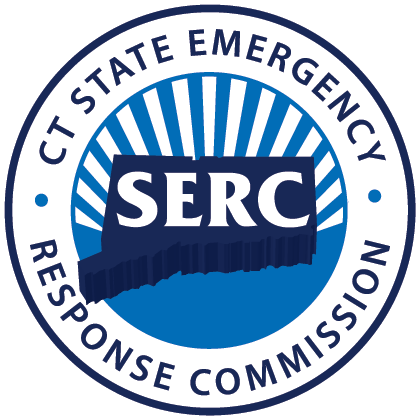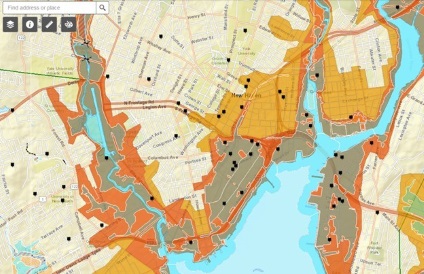Tier II Reporting and Compliance Assistance Workshops
-
EPCRA Tier II Reporting Requirements
-
for Connecticut Facilities for Reporting Year 2023
-
Date: February 6, 2024; 10am-11:30am ET
Register: https://usepa.zoomgov.com/webinar/register/WN_zGnkNUcKTnGVI1PgRoV46w
The Emergency Planning and Community Right-to-Know Act (EPCRA) establishes requirements for federal, state and local governments, Indian tribes, and industry regarding emergency planning and reporting on hazardous and toxic chemicals. Individual facilities are required to report annually on the presence and use of chemicals on-site in order to help states and communities improve chemical safety and protect public health and the environment. Every March 1st, facilities covered by EPCRA must submit an emergency and hazardous chemical inventory form (Tier II Report) to the Local Emergency Planning Committee (LEPC) or Tribal Emergency Planning Committee (TEPC), the State Emergency Response Commission (SERC) or Tribal Emergency Response Commission (TERC) and the local fire department for the previous calendar year.
Connecticut SERC and DEEP will use the Hazconnect® Tier II Manager system "Hazconnect," to manage EPCRA Tier II chemical inventory reports due March 1 each year.
To use the Hazconnect® Tier II Manager platform please register for a system user account if you have not already. If you are registered in this platform in another state you still need to register for the Connecticut platform. Here's how:
1. Sign up as a User at this link: https://connecticut.hazconnect.com/Account/Login.aspx
2. Click on the REGISTER button in the middle of the page.
3. Choose Reporting Facility/Business User then click Next.
4. Enter your information. Please be sure you enter information in the “Facility Details” text box at the bottom of the screen to inform CT DEEP of facility reports you have submitted in the past. Using this information CT DEEP will link the previous year’s report for that facility to your new user account so you can start with data pre-populated.
5. Once your User account is approved, you will receive a notification and then you can begin submitting the next year’s report. If you don’t see previously submitted reports in your account, please contact us at DEEP.CTEPCRA@ct.gov.
Facilities are still required to submit reports to their Local Emergency Planning Committee and fire department.
You can also sign up for any of the upcoming EPA EPCRA webinars at: https://www.epa.gov/epcra/emergency-planning-and-community-right-know-act-epcra-workshops-new-england. On the EPA website, you can also view recordings of our EPCRA four-part video series for more information about EPCRA requirements and Tier II Reporting.
EPCRA_Tier2_Demo_Slides_CT_January 2021
CAMEO Webinar
Introduction to CAMEO Chemicals, recorded May 23, 2023
This webinar was led by Len Wallace, EPA Region 1, who provided an overview of CAMEO Chemicals including a live demonstration. CAMEO Chemicals is the hazardous chemical database for the CAMEO® software suite, which is used widely to plan for and respond to chemical emergencies. CAMEO Chemicals also has a tool to predict possible hazards if chemicals are mixed together. With CAMEO Chemicals, you can search through the extensive chemical database to find chemical datasheets with critical response information, including physical properties, health hazards, information about air and water hazards, and recommendations for firefighting, first aid, and spill response. CAMEO Chemicals is available as a website, mobile website, mobile app, and desktop program. This webinar recording will assist first responders, emergency planners and facility staff to get key information quickly through CAMEO Chemicals.
EPA Region 1 EPCRA Video Series
The Emergency Planning and Community Right-to-Know Act establishes requirements for federal, state, and local governments, Indian tribes, and industry regarding emergency planning and reporting on hazardous and toxic chemicals. Individual facilities are required to conduct emergency planning with state and local emergency planning committees, report accidental releases to the proper authorities, and report annually on the presence and use of chemicals on-site in order to help states and communities improve chemical safety and protect public health and the environment. The four videos from EPA New England below provide detailed information about these requirements for covered facilities. Full Video Playlist on YouTube
Part 1: Introduction to Facility Hazards and Chemical Safety
Part 2: EPCRA Sections 301-303: Emergency Planning with your SERC/TERC/LEP
Part 3: EPCRA Section 304: Reporting Accidents and Continuous Releases
Part 4: EPCRA Sections 311-312: Tier II Reporting and Tier2 Submit Software
View the slides from presentations here:
EPA Region 1 Emergency Planning and Community Right-to-Know Act (EPCRA),
Risk Management Program (RMP)
General Duty Clause (GDC) Video Series (pdf)
TRI Compliance Assistance
The U.S. Environmental Protection Agency, New England's EPCRA Team periodically hold a series of TRI compliance assistance workshops. F Facility owners and operators are invited to participate in one of these workshops. TRI Reports are due annually by July 1.The U.S. Environmental Protection Agency has information on their TRI Program webpage regarding how to submit TRI reports and who needs to report.
EPA Information on General Duty Clause; Refrigerated Ammonia resources
Fire & Rescue, Hazardous Materials, and Other Emergency Services Related Training Programs
CT DESPP Division of Emergency Management and Homeland Security Training Resources
https://www.phmsa.dot.gov/training/hazmat/training-modules To register for any HazMat webinar offered by PHMSA, please visit the registration webpage at: https://www.phmsa.dot.gov/hazmat/seminars/webinars
EPA's State Delivery Prohibition Website
Chemical Management and Climate Resilience
Free on-line Training:
CT DEEP has developed a FREE, short online training (approximately 20 minutes) to help a variety of businesses, especially those in flood prone areas that use chemicals in their process, sell chemicals and store hazardous waste onsite.
Find out how to be prepared, lessen the impacts of a natural hazard, save money, and prevent risks to human health and the environment.
Examples of actions some CT facilities/businesses have already taken are included.
Go to the Training Now:
CT’s businesses can be prepared to "weather the storm"
1. Take CT DEEP's Free on-line Training
The 21st Century Resilient Business: How Managing Chemicals Can Help Your Business Weather the Storm - Designed to help a variety of businesses, especially those in flood prone areas that use chemicals in their process, sell chemicals and store hazardous waste onsite, including service providers and retail stores that sell toxic products. It provides steps businesses can take to reduce risks and prevent damage, contamination, and liability and keep your business operating. Examples of actions some CT facilities/businesses have already taken are included. (Approximately 20 minutes)
- CT DEEP online training course catalog available through UConn Center for Land Use and Education Research
- CT DEEP's Pollution Prevention training - The 21st Century Resilient Business (see Videos section below to watch the course as a YouTube video).
Related Materials: Course Transcript,Checklist, Additional Resources and Links document referenced in the training, informational survey and Certificate of Completion

2. Watch Videos with Information from CT Businesses:
If your business or facility has hazardous materials, chemicals or waste on site you'll want to watch this! Come along on site-visits to a business and a facility, both located in flood prone areas along CT's coast, to find out what changes they are making towards becoming disaster resilient. They offer ideas and examples that you can incorporate at your site.
- U.S. Naval Submarine Base, Groton, CT, Disaster Resiliency - Can Your Facility Weather the Storm?
The U.S. Naval Submarine Base is an outstanding example of preparedness. Some of the actions they have taken include elevating equipment and materials, using floodgates and having a plan of action. - Marina located along CT's coast - Can Your Business Weather the Storm?
A local full-service marina and boat repair business has implemented a variety of actions to protect the environment including a daily walk-through, connecting with local emergency responders and more. - The 21st Century Resilient Business: How Managing Chemicals Can Help Your Business Weather the Storm - training course available as a video with closed captioning and follow up survey.
3. Use Tools, Outreach Materials & Resources for Businesses:
CT Toxics Users and Climate Resilience Map
- the national flood hazard zones,
- hurricane evacuation areas,
- facilities that are EPCRA Tier 2 filers,
- RCRA hazardous waste generators,
- storage/ disposal facilities, and
- Toxic Release Inventory reporters.
Guidance Documents:
- The Resilient 21st Century Business: How Managing Chemicals Can Help Your Business Weather the Storm - find out what steps you can take to become a disaster-resilient, prepared business.
- How Retailers & Service Providers Can Manage Chemical Products to Weather the Storm - many of the products your business uses, stocks, or sells may contain chemicals. Find out what steps you can take to manage these products and become a disaster-resilient, prepared business.
Local, Regional, and State Emergency Planning:
- State of CT 2019 Plan update
- Capitol Region 2019 Plan update
- South Central Region 2018 Plan update
- Metro COG 2019 Plan update
- Resilient Communities & Businesses: Preventing Pollution from Chemicals - Presentation for CRCOG LEPC 4/2019
- Resilient Businesses: New Tools to Prevent Pollution - Presentation to SERC, 9/17/20
- Managing Your Chemicals Can Help You Weather the Storm - Presentation to SWEP, Oct 2020
Other Resources & Links:
- New Tool ASFPM Helps Property Owners Understand and Lower Flood Risk
- Rising Waters: Planning for Flooding in CT - 14 minute video
- The Torrent - A CT DEEP newsletter exploring floodplain management issues - Subscribe to The Torrent
- CT DEEP Climate Change information
- State Emergency Response Commission
- Additional viewers to assess risk: FEMA Flood Zone Viewer, Flood IQ Flood Depth Viewer, NOAA Sea Level Rise Viewer
- US Climate Resilience Toolkit
- Nature-Based Mitigation Goals and Actions in Local Mitigation Plans
- FEMA www.Ready.gov program and Ready Business
- Flood Smart
- SBA on Buying Insurance
- Resilient Nashua Toolkit
- Climate Change and Extreme Weather Events, November 2019 webinar - Collaboration on Health and the Environment
- Ready Business Toolkit, video
- CT Insurance Department - Disaster Preparedness and Recovery


